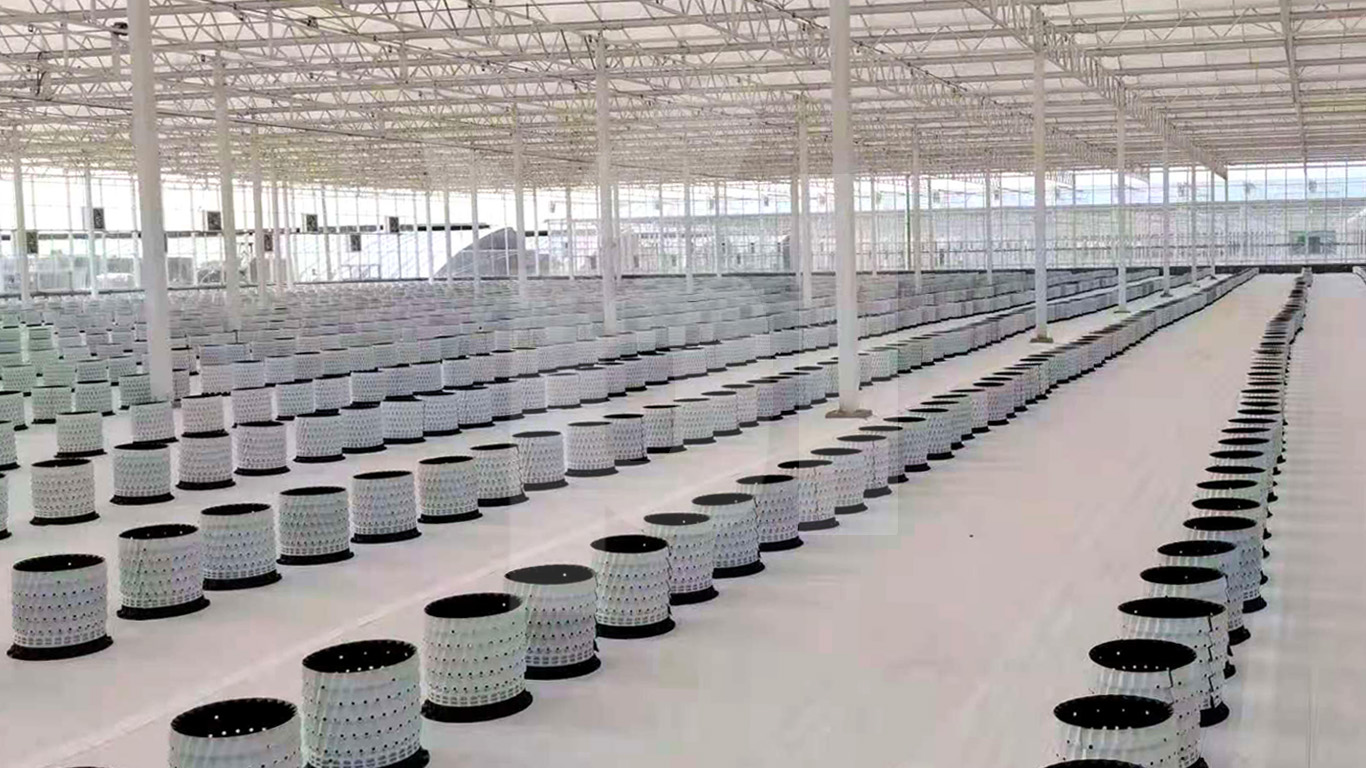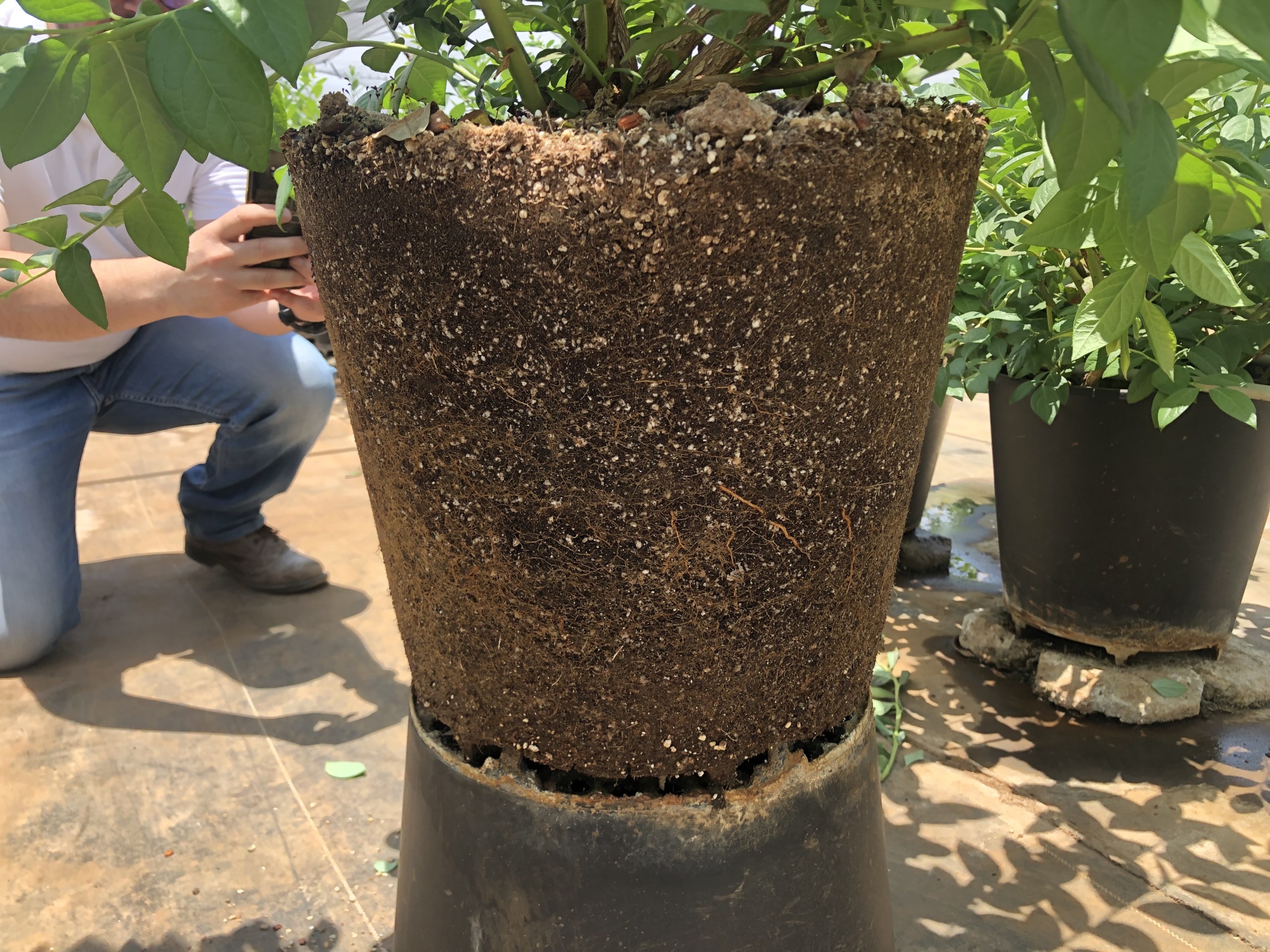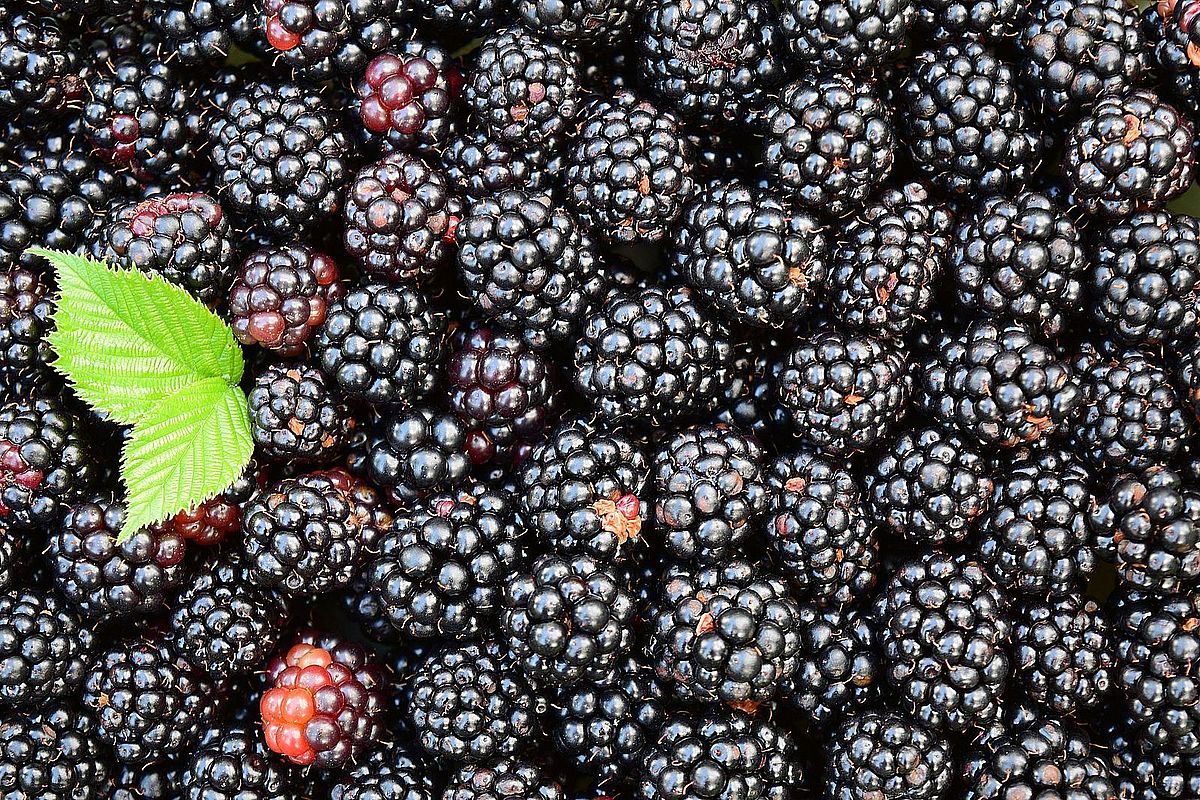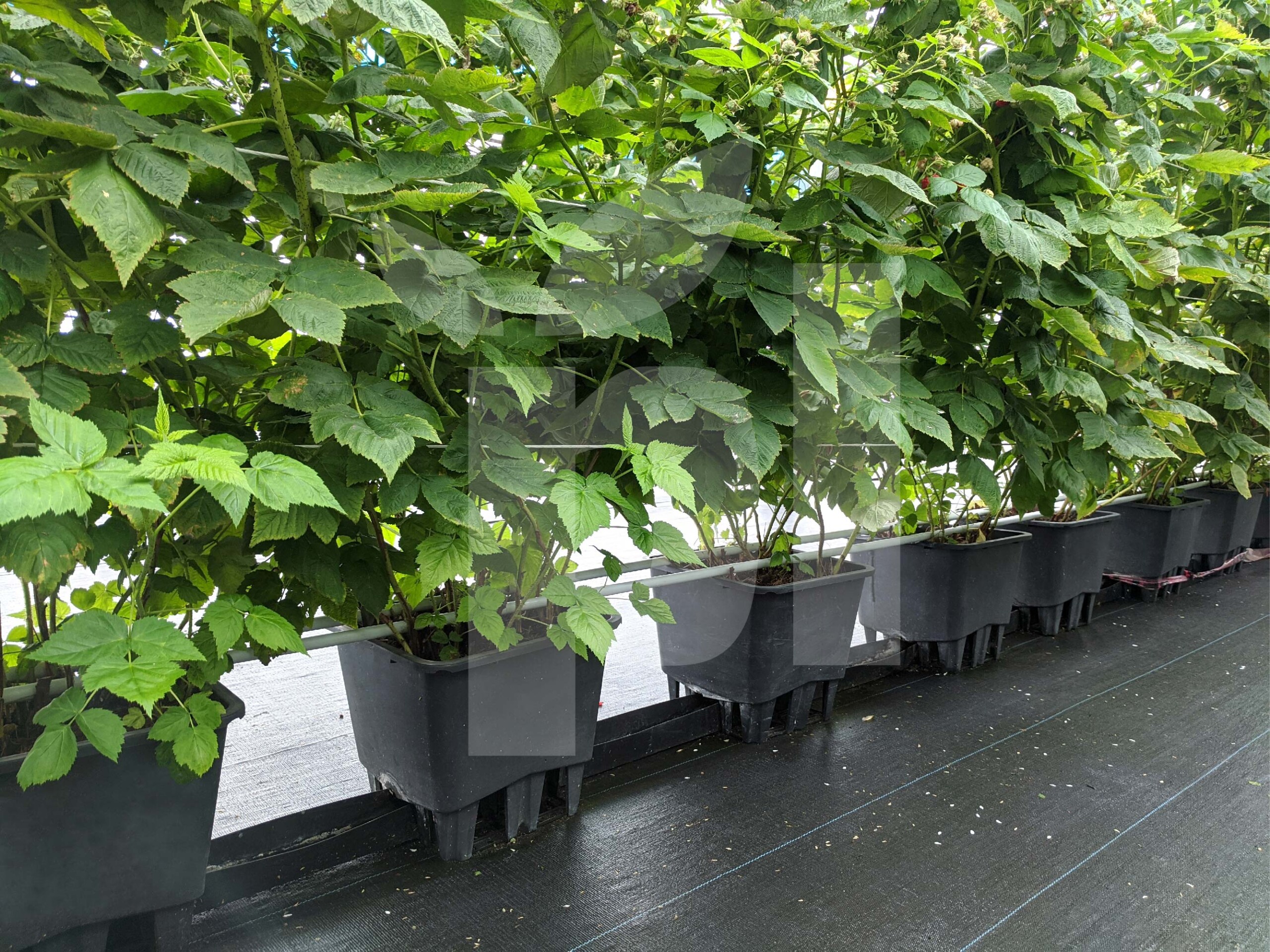Blueberries provide many health benefits in a balanced diet, ranging from antioxidant properties that prevent premature aging, to diabetes, blood pressure and cholesterol control. If you are about to start growing blueberries, you have come to the right place! In this article we introduce essential information that will help you in this endeavor. The first thing to keep in mind is that growing blueberries in pots is one of the best ways to ensure a great harvest. However, it is necessary to take into consideration several aspects that will help you guarantee the success of your cultivation. Here are the ten key requirements for growing blueberries in containers.
1. Select the right variety of blueberries
 All the varieties of blueberries that are cultivated today are the result of the species Vaccinium ashei and Vaccinium corymbosum, wild species that grow in North America. Blueberry flowers are hermaphroditic and self-fertile, which means that they will produce fruit with just one plant. However, and according to experts, it is possible to obtain higher yields if two different varieties are grown that produce flowers at the same time.
All the varieties of blueberries that are cultivated today are the result of the species Vaccinium ashei and Vaccinium corymbosum, wild species that grow in North America. Blueberry flowers are hermaphroditic and self-fertile, which means that they will produce fruit with just one plant. However, and according to experts, it is possible to obtain higher yields if two different varieties are grown that produce flowers at the same time.
There are different varieties of blueberries developed for each area and type of climate, but places with cold climates are ideal. Places with excess heat, with intense winds and rains should be avoided as it causes the fall of fruits and flowers, in addition to damaging pollination. As a recommendation, before starting your cultivation of blueberries, investigate which variety is best suited to the area where you are.
2. Consider the size of the plants
An average blueberry bush grows up to six feet, which is quite large for a plant in a container. We have compiled a list of the blueberry varieties that are most cultivated so that you can get used with their commercial names and their main characteristics:
- Lowbush. As their name indicates, they are small shrubs that can grow up to 50 cm (about half the length of a baseball bat) and belong to the species V. angustifolium.
- Northern highbush. These shrubs can grow up to 1.5 and 2 meters and are the most cultivated variety in the world developed from two species,V. corymbosum and V. australe.
- Southern highbush. These shrubs grow between 1.5 and 2 meters and are a hybrid designed from the cross ofV. corymbosum, V. elliottii, V. ashei and V. darrowi. This variety was created to be produced in warm climates and with soft winters; it is ideal for low latitudes ranging from 28 to 35 degrees where winters rarely drop below 7 ° C. It is grown in Florida, Georgia, Chile, Spain, Africa, and Mexico.
- Halfhigh. These shrubs are a cross between Northern Highbush and Lowbush, growing up to 1 and 1.2 meters.
- Rabbiteye. This group belongs to the species V. ashei and its name is because the berries turn pink (like the eye color of a white rabbit) and later turn blue. They are the largest blueberry bushes and can reach up to 20 feet in height, so pruning is necessary.
3. Choose the right container
Taking into consideration the variety of blueberries that you´ll grow is how you should choose the size of the container to obtain the best yields and for the plant to develop its maximum potential. The pots that you can use to grow blueberries are those of 25 and up to 40 liters (about half the volume of a mini fridge) and considering at least 50 centimeters deep; the distance between pots should be at least 80 centimeters (about the length of a baseball bat).
The best growing containers for blueberries are rigid plastic ones, since they keep the plant in the same position avoiding movements that can affect the root. In addition, these types of containers are more resistant to handling, drastic changes in temperature and the effects of solar radiation, specialized plastic pots also promote uniform root growth and prevent root spiralization.
 It should be noted that the pot should be as far away from the ground as possible to avoid diseases, so pots with high legs are recommended. Plantlogic´s growing containers are designed under this premise with legs from 3 to 7 centimeters high that prevent direct contact of the root with the soil, avoiding diseases. In addition, its wide legs help prevent the pot from sinking in soft soil.
It should be noted that the pot should be as far away from the ground as possible to avoid diseases, so pots with high legs are recommended. Plantlogic´s growing containers are designed under this premise with legs from 3 to 7 centimeters high that prevent direct contact of the root with the soil, avoiding diseases. In addition, its wide legs help prevent the pot from sinking in soft soil.
4. Choose an adequate substrate
In the case of hydroponic cultivation of blueberries, the substrate to be used must be inert and with a high capacity to retain moisture, since this is a determining factor for the plant to have at its disposal the necessary nutrients to breathe, carry out photosynthesis, and its reproductive process. Throughout the process, the root must have adequate respiration and therefore it is important to choose a substrate with a stable structure, very porous and complementary aeration, to avoid the danger of oxygen starvation in the root zone. For blueberries grown in pots and on a substrate base, it is recommended to use a mixture of one part pine bark and one part peat moss; It is also possible to use a mixture of coconut fiber, peat moss and perlite.
5. PH and acidity
Another essential factor in growing blueberries is the pH or acidity of the soil. Blueberries require a soil pH of 4.5 to 5.5, which should be maintained throughout the life of the shrub. Fortunately, when blueberries are grown in pots it is quite easy to control the pH of the soil. We recommend measuring the PH of the soil on a regular basis with a measuring instrument and fertilizing, as necessary.
6. Sunlight
Blueberry plants need full sun, once you have chosen the location for your crops make sure your plants receive at least 6 hours of full sun daily. In hot climates, partial shade in the afternoons can work, however you will get more fruit if your plants enjoy full sun.
7. Irrigation
 Blueberries like moist substrates and prefer abundant watering once a week to little watering daily. Since blueberry plants do not like wet roots, Plantlogic’s specialized growing containers are an excellent choice, allowing excess water to drain easily through the holes in their legs, unlike other pots that only have random drain holes in the base. In addition, its patented pyramid design promotes drainage in a space with high air flow for uniform root development.
Blueberries like moist substrates and prefer abundant watering once a week to little watering daily. Since blueberry plants do not like wet roots, Plantlogic’s specialized growing containers are an excellent choice, allowing excess water to drain easily through the holes in their legs, unlike other pots that only have random drain holes in the base. In addition, its patented pyramid design promotes drainage in a space with high air flow for uniform root development.
8. Pests and diseases
Blueberries are very resistant shrubs to insects and diseases; however, we must take care of them from certain pests such as mealybugs, aphids, and nematodes. Regarding its diseases, the most common is botrytis or rot, especially in rainy areas and elevated temperatures. It is important to note that most of these diseases are avoided by growing the plant in the right substrate and ensuring that the pot has excellent drainage.
9. Protect your plants from predators
The best way to protect your crops from predators such as birds and squirrels, without damaging the bushes, is by keeping them inside a greenhouse; although you can also improvise with a bird net or mesh around your crops to protect them. Another benefit of growing blueberries in containers is that you can place this net under the pots to keep squirrels and raccoons out.
10. Harvest
 Blueberries are ready for harvest when they reach a deep blue color and their skin is soft to the touch; If the skin becomes wrinkled, it means that you have taken too long. It is important that you collect from each bunch only the blueberries that are already ripe, since once they are collected, the ripening process will stop.
Blueberries are ready for harvest when they reach a deep blue color and their skin is soft to the touch; If the skin becomes wrinkled, it means that you have taken too long. It is important that you collect from each bunch only the blueberries that are already ripe, since once they are collected, the ripening process will stop.
As you may have noticed, growing blueberries in containers is much simpler than it seems, and you will have greater chances of success if you consider our recommendations, which range from the proper selection of the variety of blueberries to grow according to the type of climate and geographical area in which you are, to the average size of the bushes and the choice of the right container that favors the optimal development of your plants.
Similarly, you must consider various physical factors such as the choice of the appropriate substrate, pH and acidity, sunlight, irrigation, and recommendations on the care of your blueberry plants such as disease prevention, protection against predators and the right time to harvest.
Whether your cultivation of blueberries is for a commercial purpose or for your personal consumption, growing this fruit is an act of love and care that will put to the test many skills that you thought you did not have. It takes time, dedication, and patience to see the results of your arduous work and the first fruits.
If you have additional questions about growing blueberries in containers or need information about the adequate pot for your type of crop, at Plantlogic we can guide you in your agricultural project by offering high-value solutions tailored to your needs as a grower. Contact us today!










Get Social